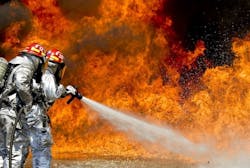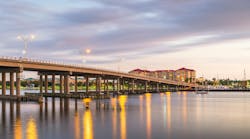Teams and contractors from the city of Deer Park, Harris County, TCEQ, EPA, and the U.S. Coast Guard are working together to evaluate impacts to Tucker Bayou and the Houston Ship Channel surrounding Intercontinental Terminals Co. in Deer Park, which recently dealt with large fires in its chemical storage tanks.
According to the EPA, the city reports that run-off of foam and chemicals resulting from the fire response do not pose a threat to the quality of the city’s drinking water. Drinking water in the area is provided to the city by the Coastal Water Authority, which draws from the Trinity River. Water is stored in a reservoir located northeast of the Lynchburg Ferry. From there, it travels through a closed pipe system to Deer Park customers. According to the EPA, water in the municipal water system does not come into contact with the water impacted by the fire response.
The public water system is designed to treat debris that has fallen, such as ash, that may have encountered untreated water stored at the drinking water plant, according to the EPA. Treated water is contained within a pressurized distribution system, and laboratory testing of the city’s water revealed no evidence of benzene. The EPA reports that the only volatile organic compounds detected were the total trihalomethanes at 14 micrograms per liter, which is below the maximum allowed 80 micrograms per liter, which is a disinfectant byproduct.
The area north of Texas 225 drains toward the Houston Ship Channel, which is not used by any public water system in the Houston area as a source for drinking water. According to the EPA, Deer Park residents who use wells north of Texas 225 should have their water tested before using.
According to the EPA, teams are looking out for and working to contain any chemicals that may be coming from the site, which include the industrial chemicals stored and firefighting foam used to fight the fire and suppress vapors.
The Coast Guard directed the placement of close to 3,000 ft of containment and sorbent boom at strategic locations along the facility’s drainage outfall to contain discharge caused by the overflow of firefighting water and foam from the facility’s containment area and an exclusionary boom has been placed around the Battleship Texas and the entrance to Santa Ana Bayou as a precautionary measure to prevent impact to these areas.
According to the EPA, if at any time, air or water sampling indicates a safety risk to operations on the Houston Ship Channel, the Captain of the Port will take immediate action to cease operations in the impacted area. Employees working at facilities along the Houston Ship Channel should follow safety instructions issued by their local and county officials.
For updates concerning this response, you can go to the EPA's site or the city's website.


